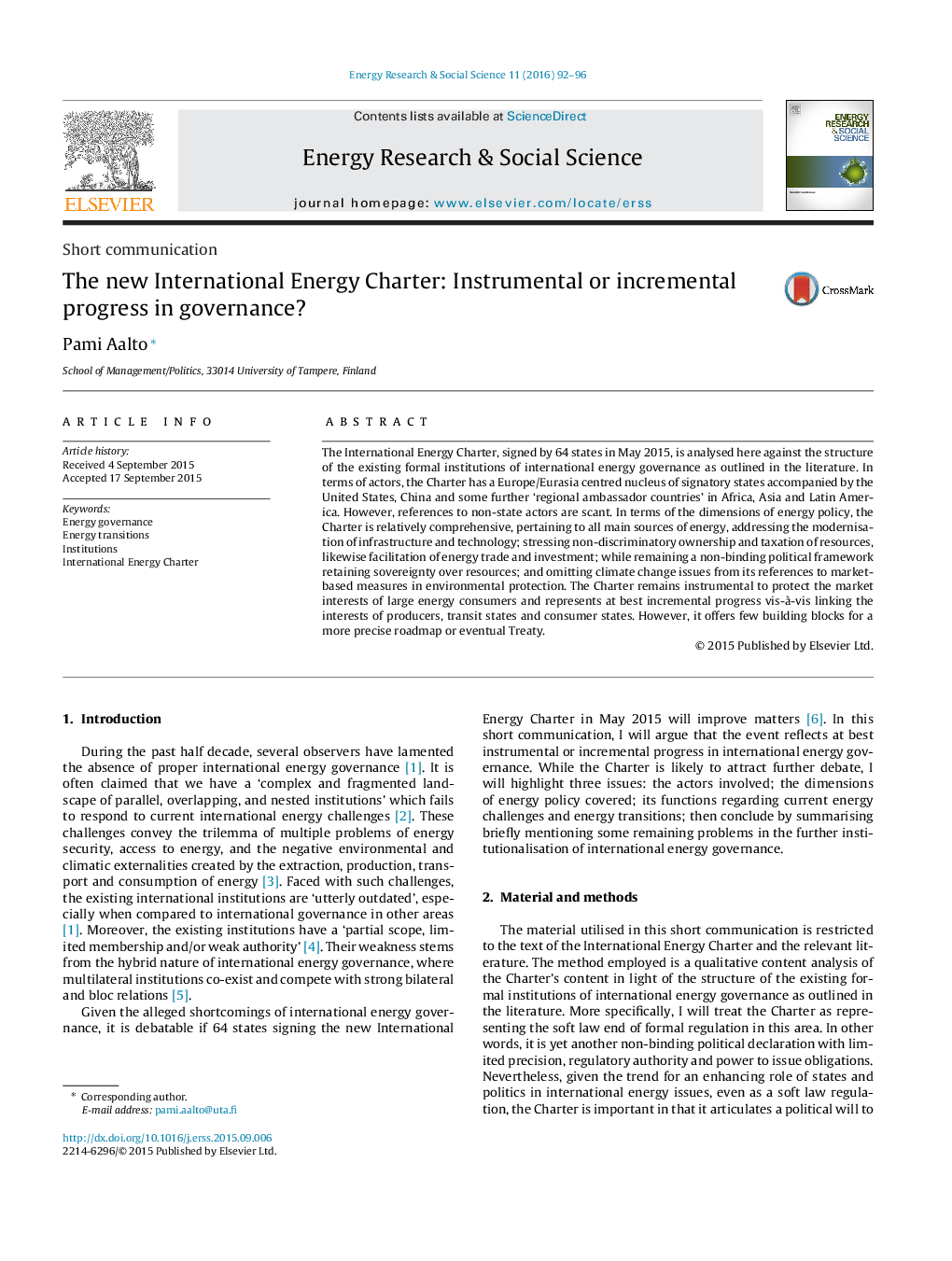| Article ID | Journal | Published Year | Pages | File Type |
|---|---|---|---|---|
| 6558357 | Energy Research & Social Science | 2016 | 5 Pages |
Abstract
The International Energy Charter, signed by 64 states in May 2015, is analysed here against the structure of the existing formal institutions of international energy governance as outlined in the literature. In terms of actors, the Charter has a Europe/Eurasia centred nucleus of signatory states accompanied by the United States, China and some further 'regional ambassador countries' in Africa, Asia and Latin America. However, references to non-state actors are scant. In terms of the dimensions of energy policy, the Charter is relatively comprehensive, pertaining to all main sources of energy, addressing the modernisation of infrastructure and technology; stressing non-discriminatory ownership and taxation of resources, likewise facilitation of energy trade and investment; while remaining a non-binding political framework retaining sovereignty over resources; and omitting climate change issues from its references to market-based measures in environmental protection. The Charter remains instrumental to protect the market interests of large energy consumers and represents at best incremental progress vis-Ã -vis linking the interests of producers, transit states and consumer states. However, it offers few building blocks for a more precise roadmap or eventual Treaty.
Related Topics
Physical Sciences and Engineering
Energy
Energy (General)
Authors
Pami Aalto,
